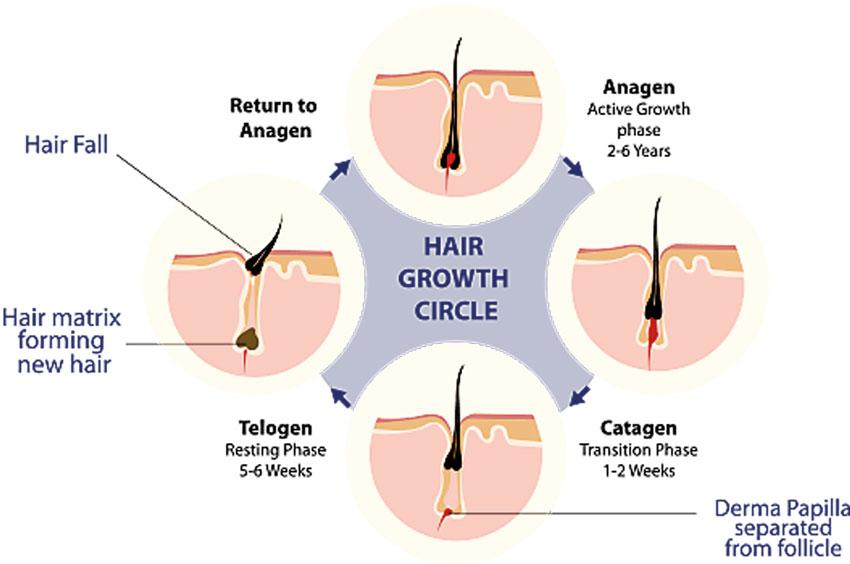17 May 2019 - {{hitsCtrl.values.hits}}

 While the main function of hair is to protect the head from serious injury, it has a great cosmetic importance. The hair is a source of pride for many individuals. In addition, much can be said about an individual’s personality from the way him or her cares for and styles their hair. Therefore, it brings much despair to a person when he notes his hair falling out. Today In health capsule, we dwell deep into the topic of hair fall on behalf of our readers. Joining us as today’s resource person is Dr.Januka Galahitiyawa.
While the main function of hair is to protect the head from serious injury, it has a great cosmetic importance. The hair is a source of pride for many individuals. In addition, much can be said about an individual’s personality from the way him or her cares for and styles their hair. Therefore, it brings much despair to a person when he notes his hair falling out. Today In health capsule, we dwell deep into the topic of hair fall on behalf of our readers. Joining us as today’s resource person is Dr.Januka Galahitiyawa.
Defining ‘normal Hairfall
Like every other unit in our body, a hair follicle has its own life cycle. Initially, at the growing stage, a fibre of hair is produced by the hair follicle and then is nourished, making the hair grow. This stage can last for several years, 2-7 years depending on the length of one’s hair. Out of one to one and a half lakhs of hairs on a healthy scalp, 80% belongs to the growing stage. Then, the hairs of growing phase go to rest phase which is around 15% of the whole scalp hair, when the strands stop growing and remain static. Eventually, after around three to four months, it falls off and the cycle is repeated all over again with the hair follicle producing a new strand of hair.
Each individual hair follicle in our body has its own independent lifecycle, with only a small percentage of them in the falling out phase. Therefore, hairfall of upto 100 to 150 strands per day is considered normal.
Excess hairfall
A person usually identifies that he is having excess hairfall by noticing increase breakdown of hair when combing, and increased number of hairs fallen on the bathroom floor, etc.
There are various patterns of hair loss. Male pattern hair loss causes disappearing of hair in the top and front of the scalp, the condition known as alopecia areata causes loss of hair in patches in any area of the scalp or the body, and the condition called telogen effluem causes thinning of hair distributed equally over the scalp. Causes of hair loss are also varied. Telogen effluvium is a condition where the hair in the body goes into the resting stage early due to physical or psychological stress. The source of stress can be varied from exam stress to an illness like dengue fever to the stress of childbirth. May be due to a heart attack or and surgery. These conditions cause a large percentage of hair (upto 30%-60%) to go into resting stage at once. So, the hair fall greatly increases around 2-3 months after the event, by which timethe stressor which caused hair loss in the first place is long gone, in many cases, to the bafflement of the individual. If there are no persisting ill effects, the condition usually resolves and the hair will be back to its normal healthy state in a few months’ time. If some nutritional deficiency of macro or micro nutrients such as iron, calcium, selenium or some hormone related illness like thyroid disorder is co-existing, should be treated accordingly.
Alopecia areata is a condition where the body’s immune cells attack body’s own tissue; hair follicles in this case, mistaking them for foreign cells invading the body. This causes hair to fall away in clumps leaving bare spots in the scalp. It can occasionally cause the falling off of eyebrows, loss of beard and other body hair as well. Alopecia areata is a condition which is difficult to treat, when the whole scalp is involved or bare patches are close to the edge of the hairline or when the presentation is during chilhood.
Many people believe that frequent styling of hair is a cause for hairfall. There is some truth in that, according to Dr. Galahitiyawa. Frequent styling of hair and pulling on hair, leading to a condition called traction alopecia which increases hair loss. This is a condition which causes scarring alopecia where re-growing of hair is unlikely on those areas. There are few other conditions where the re-growing of the hair could be unlikely if we did not treat quickly.
They are Kerion, which is a dog ring worm infection which could acquire on children and discoid lupus erythematoses which could be a part of a systemic illness
Male pattern hairloss, also called balding is a frequent problem amongst men, causing much distress. The cause of this is found to be an excess of a group of hormones called androgen hormones. Furthermore, this condition also has a genetic predisposition. Men whose fathers had male pattern hairloss have an increased chance of going bald and age of onset could be from 18/20 years. Females can also get this condition, but unlike in males whose loss of hair is predominantly in the front hairline and the top of the head, females experience thinning of hair prominently in the midline of the scalp.
Another cause of hair loss is cytotoxic medications, those are the drugs used to treat cancer patients and poisons. They may cause more than 80% to 90% hair fall, which is so sudden and occurs within one week of exposure as the hair falls off during the growing period even without going into the rest phase But this loss is temporary and the hair growth returns to normal when the drugs or poisons are out of the system, in a few months’ time following treatment. Disease conditions affecting the scalp could cause hair loss like in conditions like Dandruff, Seborrhiec dermatitis, Psoriasis and fungal infections of the scalp. These require treatment to the underlying condition itself, in order to prevent associated hair loss.

Treatment
Treatment for hair loss depends on the cause of hair loss. Some causes like anti-cancer medication, telogen effluvium are reversible without any treatment. Some diseases, like alopecia areata require drug treatment, when the involvement is more, explains the doctor. It could be creams, intralesional injections or drugs in the tablet form. Both male and female pattern hair loss is treatable. Female pattern hair loss can be accompanied with various other conditions like polycystic ovarian syndrome or other hormone related issues which require separate investigations and treatment. Treatment of balding includes topical or oral minoxidil or other drugs. If these treatments fail, there are other treatment options as well.
One such treatment which has gained much popularity over the years is Platelet Rich Plasma Therapy(PRP). In this treatment, blood of the patient is collected from a peripheral vein in to a small vial and is centrifuged until the platelet rich plasma is separated from the blood cells. This plasma is injected into areas with poor hair growth in the scalp, using a fine needle, after numbing of the skin using a local anesthetic agent. This plasma contains hair growth stimulating factors which promotes hair growth as well as reduces the ongoing loss.
Fungal infections can also cause hair loss and prompt treatment with antifungal agents prevents scarring alopecia.
Hair transplantation can be attempted as a last resort to thinning of hair. Hair carefully plucked from the back of the patient’s own scalp is used for transplantation. Unfortunately, while this method is expensive, it does not guarantee 100% success and it does not treat the ongoing hairloss.
Summary
In a nutshell, hair loss is a common dermatological problem found amongst a large percentage of the population, causing much psychological distress.Causes for hai r loss can be varied from individual to individual. Many of the causes for hair loss are treatable. There are a variety of treatment options ranging from drugs to hair transplantation and the treatment methods depend on the cause of hair loss. Therefore, it is advisable to visit a dermatologist if you are suffering from hair loss, in order to evaluate the cause and to start appropriate treatment.
22 Dec 2024 1 hours ago
22 Dec 2024 3 hours ago
22 Dec 2024 3 hours ago
22 Dec 2024 5 hours ago
22 Dec 2024 6 hours ago